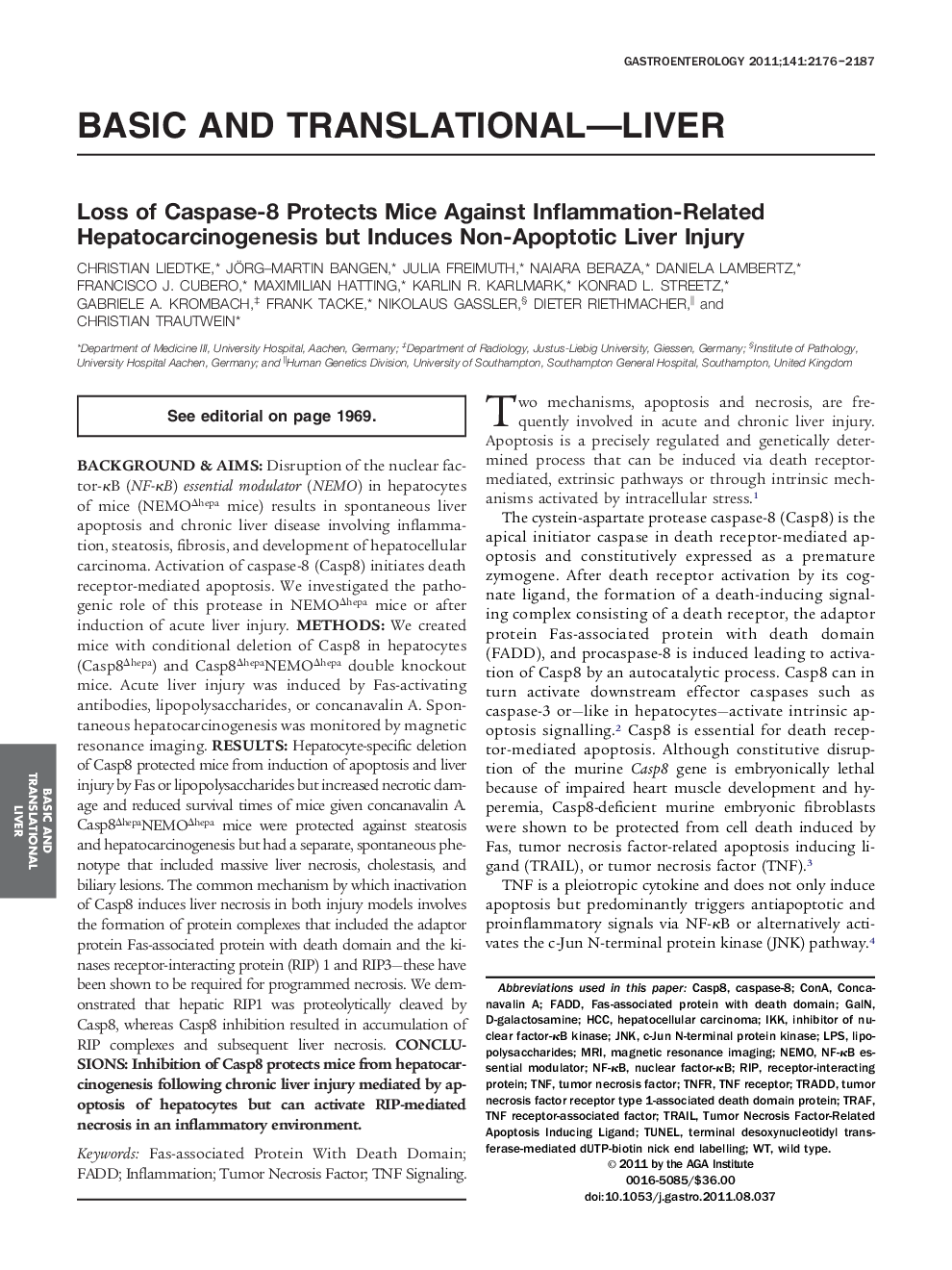| کد مقاله | کد نشریه | سال انتشار | مقاله انگلیسی | نسخه تمام متن |
|---|---|---|---|---|
| 3293623 | 1209824 | 2011 | 12 صفحه PDF | دانلود رایگان |

Background & AimsDisruption of the nuclear factor-κB (NF-κB) essential modulator (NEMO) in hepatocytes of mice (NEMOΔhepa mice) results in spontaneous liver apoptosis and chronic liver disease involving inflammation, steatosis, fibrosis, and development of hepatocellular carcinoma. Activation of caspase-8 (Casp8) initiates death receptor-mediated apoptosis. We investigated the pathogenic role of this protease in NEMOΔhepa mice or after induction of acute liver injury.MethodsWe created mice with conditional deletion of Casp8 in hepatocytes (Casp8Δhepa) and Casp8ΔhepaNEMOΔhepa double knockout mice. Acute liver injury was induced by Fas-activating antibodies, lipopolysaccharides, or concanavalin A. Spontaneous hepatocarcinogenesis was monitored by magnetic resonance imaging.ResultsHepatocyte-specific deletion of Casp8 protected mice from induction of apoptosis and liver injury by Fas or lipopolysaccharides but increased necrotic damage and reduced survival times of mice given concanavalin A. Casp8ΔhepaNEMOΔhepa mice were protected against steatosis and hepatocarcinogenesis but had a separate, spontaneous phenotype that included massive liver necrosis, cholestasis, and biliary lesions. The common mechanism by which inactivation of Casp8 induces liver necrosis in both injury models involves the formation of protein complexes that included the adaptor protein Fas-associated protein with death domain and the kinases receptor-interacting protein (RIP) 1 and RIP3—these have been shown to be required for programmed necrosis. We demonstrated that hepatic RIP1 was proteolytically cleaved by Casp8, whereas Casp8 inhibition resulted in accumulation of RIP complexes and subsequent liver necrosis.ConclusionsInhibition of Casp8 protects mice from hepatocarcinogenesis following chronic liver injury mediated by apoptosis of hepatocytes but can activate RIP-mediated necrosis in an inflammatory environment.
Journal: Gastroenterology - Volume 141, Issue 6, December 2011, Pages 2176–2187